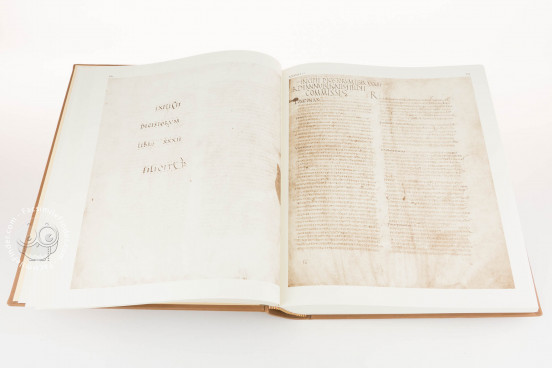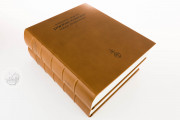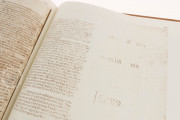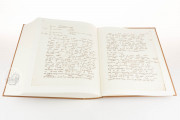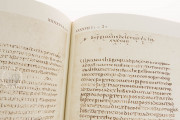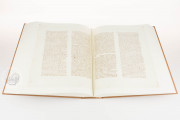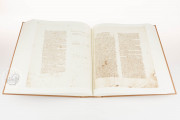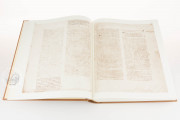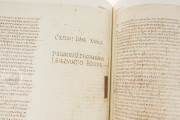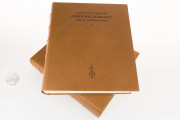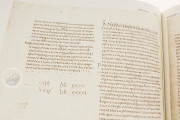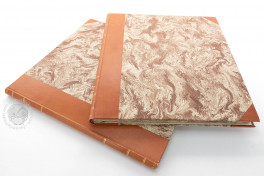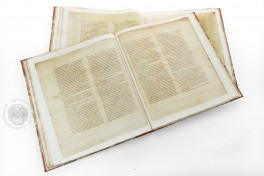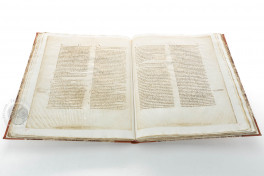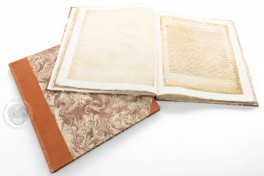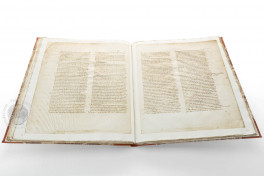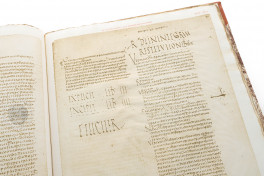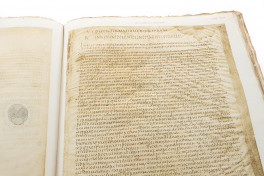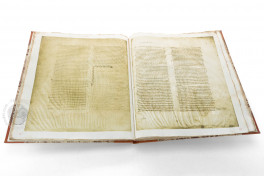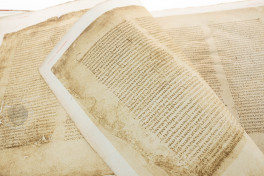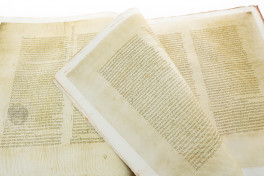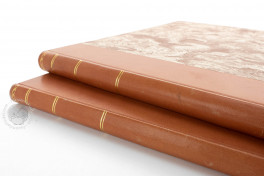The compilation of Roman law can be counted among Emperor Justinian's most defining contributions to society. The massive initiative of consolidating around 1,528 books of classical jurisprudence began in 530. The resulting mammoth Corpus iuris civilis was finished in 533. Justinian ordered seventy copies of the enormous text, which made a large part of Roman law available to medieval canonists. While forming the basis of the legal profession in the late eleventh century, the legacy of the text is still relevant today as the forerunner of the modern system of law.
The sixth-century Littera Florentina is the oldest witness to this initiative and, apart from some lacunae, contains the entire Latin and Greek text. The manuscript is dated to the sixth century, and some experts have specified a dating between 533 and 557, making this monument a near contemporary to the official promulgation.
Scriptio Continua
The manuscript is significant as an example of the variant of Uncial script known as b-r Uncial, named for the unique characteristics of those two letterforms. This is the same style of Uncial used in another important legal collection, known as the Gai Codex Rescriptus. Lacking punctuation and spaces between words, text runs continuously in a style of writing called scriptio continua.
Written in two columns, the text switches often between Latin and Greek, and its copying involved more than twelve scribes who worked in a place where both professional Greek and Latin scribes could be found. The majority of the Greek is written in a Biblical Majuscule, but the characteristics of the script indicate that the Latin script influenced its appearance. The juxtaposition of the two languages is important because it appears that the Latin also influenced the Greek linguistically in the borrowing of legal terms. Larger headings differentiating the various sections of the text are written in Half-Uncial. While the text is not illustrated, various decorative motifs appear alongside some of headings.
Prized War Booty
Although the origins of the manuscript remain unknown, it enjoyed great renown throughout the Middle Ages and the early modern period. The codex was in Italy from early on, and brief notes in Beneventan Minuscule dating from the ninth to the eleventh centuries indicate that the book was in the southern part of the peninsula. Legend has it that the book was taken from Amalfi to Pisa as war booty, but there is little evidence in the manuscript itself to substantiate this. In the Middle Ages, the codex was known as the Littera Pisana and, by the mid-twelfth century, was frequently consulted and annotated by jurists from Bologna.
Following the capture of Pisa by Florentine forces on October 9, 1406, the manuscript was moved to the audience hall of the Palazzo dei Priori in Florence, where it was kept in a tabernacle (called the Sancta Sanctorum). The book was also given a precious binding in 1445. The manuscript entered the collection of the Laurenziana in 1761.
We have 2 facsimiles of the manuscript "Littera Florentina":
- Justiniani Augusti Digestorum seu pandectarum Codex Florentinus olim Pisanus facsimile edition published by In Officina Danesi, 1902
- Justiniani Augusti Pandectarum - Codex Florentinus facsimile edition published by Leo S. Olschki, 1988

